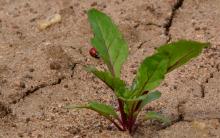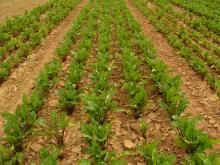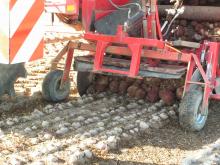Saint-Benoît-sur-Loire, France’s red beet capital
Over the past 50 years or so, Loiret farmers have developed respected techniques and know-how to produce quality red beets while following an environmentally-friendly approach.
These are the main stages in production:
- First, the soil is prepared for the seedbed: clumps are crumbled up, the ground is levelled and made into mounds. Proper work on the soil will ensure good growth for the crops, all the more so with a vegetable grown for its root.
- The seedbed is made using a precision pneumatic seed drill. Most seed varieties are multigerm, meaning that each grain yields several plantlets. The amount of grain is calculated in such a way as to raise 400,000 to 750,000 beetroots per hectare.
- The beets come up and the initial leaves develop. This is the time for weeding, to ensure that weeds will not take over from the young beets.
- Vegetation grows and gradually covers up the spaces between rows and the entire mound.
- The roots expand. This is the period when the requirements in water and mineral elements are highest.
- The leaves deteriorate to the benefit of the roots, which get loaded in sugar.
- Prior to harvest, the crops’ leaves are plucked using a horizontal axle mechanical plucker with rubber straps. The straps skim the tops, taking care not to damage the roots.
- The beets are harvested using a mechanical stripper featuring a lifting blade and conveyor belt that transfers them into either a shaft or a farming dumpster towed alongside the stripper.
- The harvest is taken straight to the processing company or stored in a silo.
- Beets intended for preserves are stored in a silo that consists of a heap covered with a perforated tarpaulin and then with hay. When the temperature is below freezing, a second tarpaulin is used. The silo may be equipped with a ventilation shaft for better temperature control. Storage requires real know-how and very careful monitoring.
- The silo is gradually emptied throughout the winter and until the following spring, in order to supply the steam cooking units year round.



